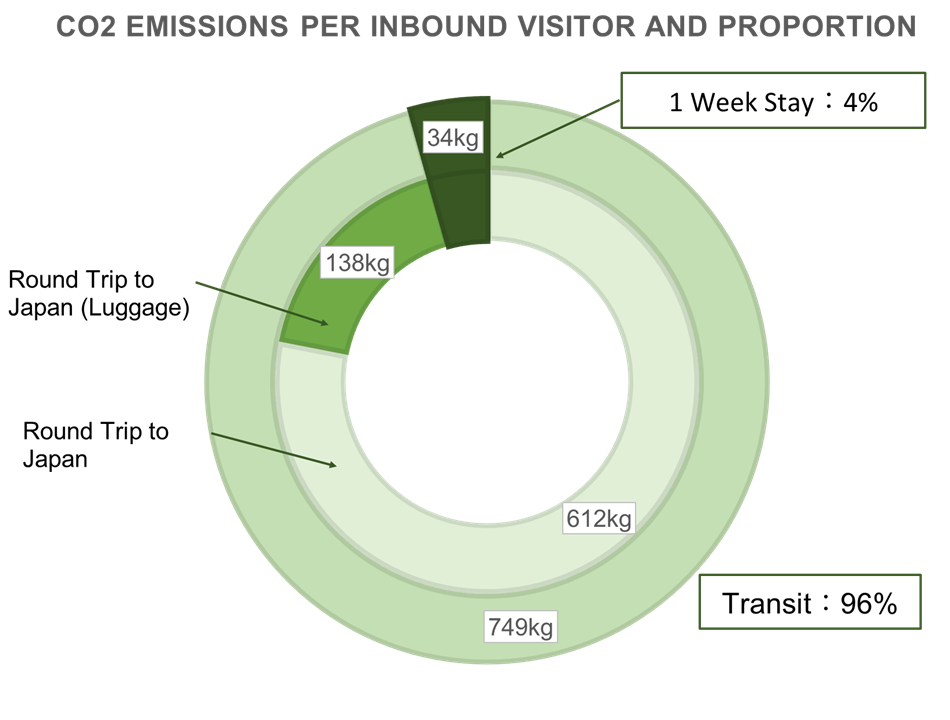Endorsing Carbon Pricing Proposals
Table of Contents
1: Endorsing Carbon Pricing Proposals
2: The Content of the Proposals
3: Recognizing the Significance of CO2 Emissions During Travel
1: Endorsing Carbon Pricing Proposals
On December 5, 2023, the Japan Climate Initiative released the proposal “Carbon Pricing Proposals by the Members of the Japan Climate Initiative: Toward Simultaneous Achievement of 2030 GHG Emission Reduction Targets and Enhanced International Competitiveness.” As one of the 186 organizations (including 140 corporations, 9 municipalities, and 37 organizations & NGOs), our company has endorsed these proposals. Major corporations such as 61 companies listed on the Tokyo Stock Exchange Prime and cities like Omi-Hachiman, Kawasaki, Kyoto, Sapporo, Setagaya, Tokyo, Toyonaka, Hamamatsu, and Musashino have also expressed their support.

2: The Content of the Proposals
This proposal aims to introduce carbon pricing able to halve greenhouse gas emissions by 2030 in Japan, paving the way for its internationally competitive economy. To this end, this proposal calls for six principles including the following that should be fulfilled in the future design of the system, improving the current government proposal.
・Bringing the schedule of the introduction forward to around 2025
・Aiming sufficient carbon price in 2030 such as USD 130 / t-CO2 indicated by IEA
・Rebuild the system into a cap-and-trade type emissions trading system on a par with global standards by setting a limitation as a cap on total emissions in targeted sectors and obligating the companies to participate in the system and reduce emissions rather than leaving it up to companies’ own initiatives.
These improvements are based on the following six principles:
(1) An effective carbon pricing system should be introduced by 2025 to achieve the 2030 reduction target.
(2) Fairness should be ensured by making all companies that meet certain requirements uniformly subject to the system.
(3) Future carbon prices should be clearly stated at a level comparable to the world.
(4) The system should conform to international rules.
(5) Government revenues should support reductions by companies that have difficulty reducing emissions under fair evaluation.
(6) Transparency should be ensured in the planning, evaluation, and updating of carbon pricing.

3: Recognizing the Significance of CO2 Emissions During Travel
Our company acknowledges the importance of understanding and reducing CO2 emissions during travel. The CO2 emissions from international tourists traveling to Japan amount to 749 kg (*), which applies to Japanese traveling abroad. Of this, 138 kg is attributed to the emissions from 20 kg of luggage.

Source: ICAO’ CARBON EMISSIONS CALCULATOR’, National Institute for Environmental Studies’ Greenhouse Gas Emissions Data in Japan’
The CO2 emissions for a 7-day stay in Japan amount to only 34 kg. These emissions occur because the average Japanese household emits 4.9 kg of CO2 per day. Therefore, the CO2 emissions of international tourists traveling to Japan, 749 kg, are equivalent to 154 days’ worth. Even the 138 kg from luggage alone equates to 28 days’ worth. Many involved in travel need to be made aware of this fact. It is crucial first to recognize this reality.
Travelers cannot avoid moving, but they can reduce their luggage. Hence, introducing a carbon pricing system for CO2 emissions during travel can help raise widespread awareness about the magnitude of these emissions, which is why our company strongly supports this initiative. Calculated at the IEA’s rate of $130 per t-CO2, the CO2 emissions for a round trip to Japan, 749 kg, would cost USD 97 (at an exchange rate of 146 JPY/USD, JPY 18,980).
Many of you are already making efforts to reduce CO2 emissions daily. However, not making such efforts during travel can undermine these daily endeavors. Let’s spread this awareness to as many people as possible. Also, when reducing CO2 emissions during travel, considering clothing rental is one option to be thankful for.
(*) This volume is the average for travelers from three cities: New York, Singapore, and Taipei. A traveler flying economy class round trip to Narita Airport from New York, Singapore, and Taipei emits 942 kg, 594 kg, and 147 kg of CO2, respectively. The average for the three cities is 612 kg. Meanwhile, the CO2 emissions for luggage (20 kg) round trip from Narita Airport to these cities are 244 kg for New York, 114 kg for Singapore, and 55 kg for Taipei, accounting for 18-26% of the traveler’s emissions (The source of CO2 emissions for travelers and luggage is the ICAO’ CARBON EMISSIONS CALCULATOR’). The average luggage emissions for the three cities are 138 kg.